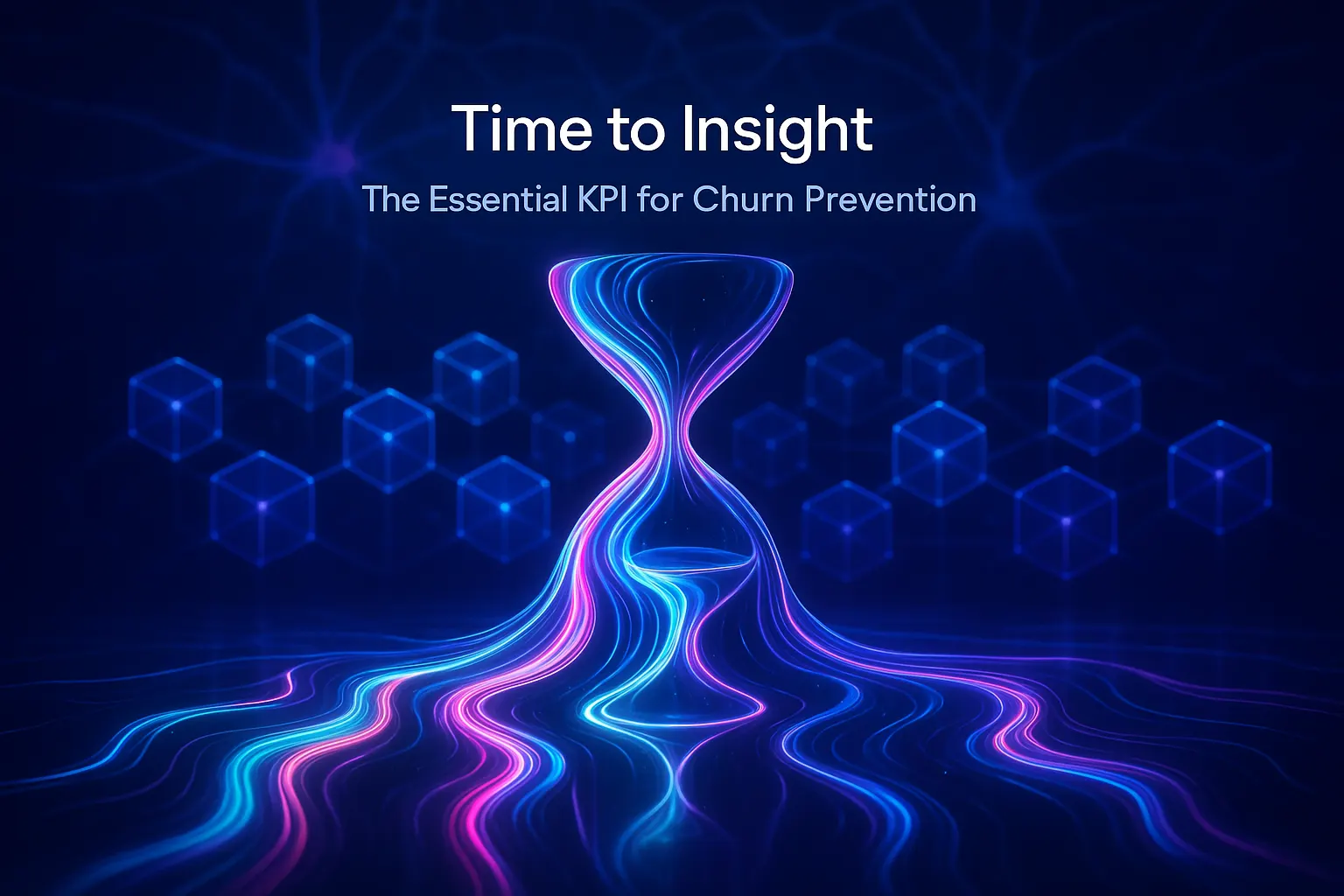Stop the second email: solve it the first time
You strive to deliver quick answers, but customers keep coming back. That return message impacts your team’s morale and raises costs. First Contact Resolution (FCR) is the key to breaking this cycle, it directs your team to resolve customer issues in a single interaction, whether via chat, email, or phone. FCR should be a core customer success KPI, not just an impressive figure that doesn’t improve your service.
High FCR reflects clear communication, strong context, and agent confidence. It not only reduces ticket volume, it also maintains or improves customer satisfaction. FCR’s true value comes from exposing process gaps that hinder growth. When you frame FCR correctly, every reply gets sharper and your team’s ability to recall customer history improves.
What FCR really measures
FCR measures the percentage of cases resolved during the initial interaction. This applies to both synchronous and asynchronous channels, with the same principle: one contact, one resolution.
Formula: FCR (%) = Cases resolved on first contact ÷ Total cases × 100.
Don’t confuse FCR with first response time. While speed is valuable, thorough resolution is what earns customer trust. A quick reply that asks for more information may still cause churn. A considered, complete first response that solves the issue is far more effective.
- Chat and phone: The session ends with a confirmed solution.
- Email: The first agent response resolves the query, no further emails required.
- Self-service: The customer solves the problem independently, with no need to contact your team.
Set the rules before you measure
A clear set of guidelines will prevent inflated FCR numbers and wasted effort. Decide on these factors before you start tracking FCR:
- What is a contact: Define it as a single chat, call, or the first outbound email.
- Time window: Set an allowable window for asynchronous replies, such as 24 hours.
- Transfers: Count internal handoffs as one contact if the customer remains in session throughout.
- Reopened cases: If a case reopens within the designated window, it’s not considered resolved on first contact.
- Multi-issue tickets: Break these out by issue intent, or your FCR data will be inconsistent.
- Automation credit: If a bot only asks triage questions, that does not count as resolution.
Document tricky examples and train reviewers on how to handle them. Agents are more likely to respect FCR as a KPI when the rules feel transparent and fair.
Practical tactics that raise FCR without cutting empathy
- Clarify intake: Use precise forms and guided prompts to capture all relevant context from the start.
- Write like a technician: Use clear, step-by-step instructions and request confirmation.
- Bundle next steps: Offer the main solution and an alternative in the same message.
- Anticipate missing details: Ask focused, specific questions up front rather than several vague ones.
- Use dynamic templates: Turn your most successful resolutions into adaptable macros.
- Strengthen your knowledge base: Keep the top 50 intents reviewed and up-to-date each month.
- Improve bot handoffs: Ensure bots gather all relevant context, then transfer it accurately to a human agent.
- Audit chatbots: Regularly evaluate your bots, if bots hinder progress, follow this guide to fixing common chatbot issues fast.
Resolve once, remember forever.Every case solved should inform and improve future first contacts.
Diagnose FCR by intent, not only by channel
Reviewing FCR only by channel can obscure the bigger picture. Instead, segment by case intent first, then filter by channel and support tier. This reveals actionable patterns quickly.
- Sort issues by volume and identify those with the lowest FCR.
- Review 20 samples from each problematic intent.
- Tag root causes, look for missing data, vague policies, or technical limitations.
- Act: update macros, retrain bots, and revise policies as needed.
- Monitor outcomes the following week and track improvements.
Pay attention to language as well; low FCR in non-English queues is often due to unclear translations rather than knowledge gaps. Use localized templates with product-specific terminology.
How AI writing assistants help in real workflows
AI can assist agents in composing replies that comprehensively resolve the issue at hand, using the tools they’re already familiar with. The best setup integrates your AI solutions seamlessly with your CRM, email, and chat systems. These AI tools offer suggested steps, ensure consistent tone, and highlight missing context, all of which lead to fewer follow-up interactions and transfers.
Typewise exemplifies this approach by providing AI writing assistance tailored for customer service. It integrates with your existing workflows, maintains brand voice, and helps reduce response times while increasing clarity. Privacy and enterprise requirements are respected, and your agents maintain full control over the final message. The result: customer service teams work more efficiently and make fewer mistakes.
If you’re building your support tech stack, map each feature to a specific FCR failure. For a detailed framework, see the essential AI stack for customer success. Then plan integrations that demonstrate value quickly, in weeks instead of quarters.
Tools for higher FCR: a quick landscape
- Help desk platforms: Zendesk, Intercom, and Freshdesk help with ticket routing, macros, analytics, and context sharing for effective reporting.
- Typewise: An AI platform that helps craft brand-appropriate replies within your existing workflows. It enhances grammar, resolves issues faster, and preserves customer data privacy.
- Workflow automation: n8n and Zapier sync systems and automate data checks before sending the first response.
- Knowledge management: Guru, Notion, or Confluence for continuously updated processes, paired with a weekly quality assurance cycle.
- Telephony and chat tools: Your voice or chat tools should enable smooth handoffs and provide context pop-ups. These features support context retention and higher FCR.
Focus on implementing one improvement every quarter. Addressing a single bottleneck at a time leads to compounding results.
Metrics that pair well with FCR
FCR is most effective when monitored alongside related metrics, helping to avoid blind spots and manipulation of results.
- CSAT: Verifies that one-contact resolutions maintain a positive experience.
- Customer Effort Score: Reflects how easy it was for customers to resolve their issue.
- Reopen rate: Tracks situations where issues reoccur, indicating incomplete solutions.
- Transfer rate: Identifies training needs or routing gaps.
- Escalation rate: Points to policy or tool limitations.
- First response time: Ensures agents are responding promptly as FCR improves.
- Average handle time: Watch out for rushed, superficial fixes as agents strive for higher FCR.
- Self-service containment: Measures how often customers find solutions without agent intervention.
A simple 30‑day plan to raise FCR
- Week 1: Define your FCR rules and establish current baselines. Break cases down by primary intent. Collect examples of both low and high FCR outcomes.
- Week 2: Implement three immediate improvements. Update the top-used macro, clarify instructions, and revise knowledge documentation for at least one problematic intent.
- Week 3: Enable AI writing tools in your help desk. Import style guides and ensure policies are followed. Convert strong replies into actionable templates.
- Week 4: Audit 50 recent cases. Analyze FCR, CSAT, and reopen rates. Use your findings to plan next month’s focus, targeting the intent with persistently low FCR.
Stay in a tight improvement loop. Share new wins every Friday and communicate key lessons to the whole team.
Avoid common mistakes that distort FCR
- Counting partial fixes: A workaround that requires another follow-up doesn’t count as resolved.
- Ignoring silent customers: If there's no confirmation, follow up once; then close according to policy.
- Valuing speed over substance: Quick answers that lack depth drive more contacts and increase customer effort.
- Poor bot intent detection: Inaccurate routing by bots causes loops and undermines trust.
- Overlooking intent-level issues: Channel or average metrics can hide specific problem areas. Always segment your analysis.
Bring FCR into your team’s daily rhythm
Make FCR a visible part of standups and weekly meetings. Celebrate single-interaction resolutions and immediately turn successful replies into reusable templates. Treat every solution as a building block for future success.
Consistently applying clear rules, supported by integrated AI writing tools, will drive your FCR higher. Customers will notice, and your team will benefit from reduced repeat contacts and calmer queues.
Ready to reduce repeat contacts?
If you want to deliver better first responses without sacrificing your brand’s voice, try a dedicated AI assistant that integrates directly into your support stack. See how Typewise can work in your environment by piloting it on your lowest-FCR intents. Connect with the Typewise team to explore a focused pilot and start raising your FCR today.
FAQ
What is First Contact Resolution (FCR) and why is it critical?
FCR signifies the percentage of customer issues resolved at the first interaction. It's crucial because incomplete resolutions drive repeat contacts, which inflate costs and demoralize teams. The real value of FCR lies in revealing and rectifying systemic gaps.
How does FCR differ from first response time?
First response time measures how quickly an agent acknowledges a query, while FCR assesses the thoroughness of the resolution. Quick but superficial responses spike churn risk. Your aim should be resolutions, not just replies.
What typical mistakes skew FCR data?
Common errors include counting partial solutions, ignoring unconfirmed resolutions, and prioritizing speed over substance. These mishaps inflate FCR figures and obscure real performance insights, misleading strategic decisions.
Why is segmenting FCR by intent important?
Analyzing only by channel conceals specific problem areas. Sorting by intent first surfaces actionable patterns and addresses the root causes of low FCR, allowing for more targeted improvements.
How do AI writing assistants improve FCR?
AI can seamlessly aid in crafting precise, context-rich responses, minimizing the need for follow-ups. They integrate into existing workflows, ensuring tone consistency and accuracy without compromising agent autonomy.
What are the consequences of poor FCR practices?
Poor FCR practices result in inflated ticket volumes, unhappy teams, and dissatisfied customers. This not only escalates costs but also erodes trust, potentially amplifying churn and damaging brand reputation.
How can automated tools help maintain high FCR?
Automated tools streamline the initial data capture and routine responses, enabling agents to focus on complex issues. However, if not managed properly, they risk delivering incomplete resolutions, underlining the need for precise automation strategies.






